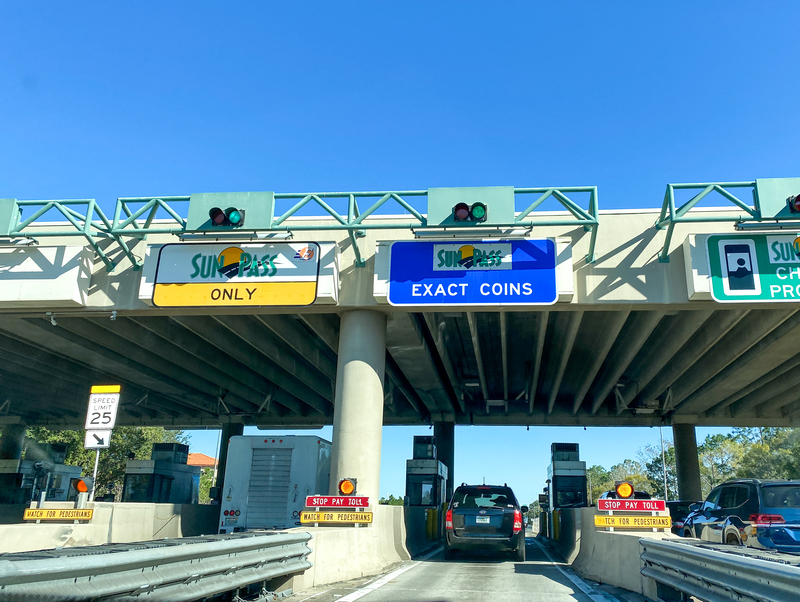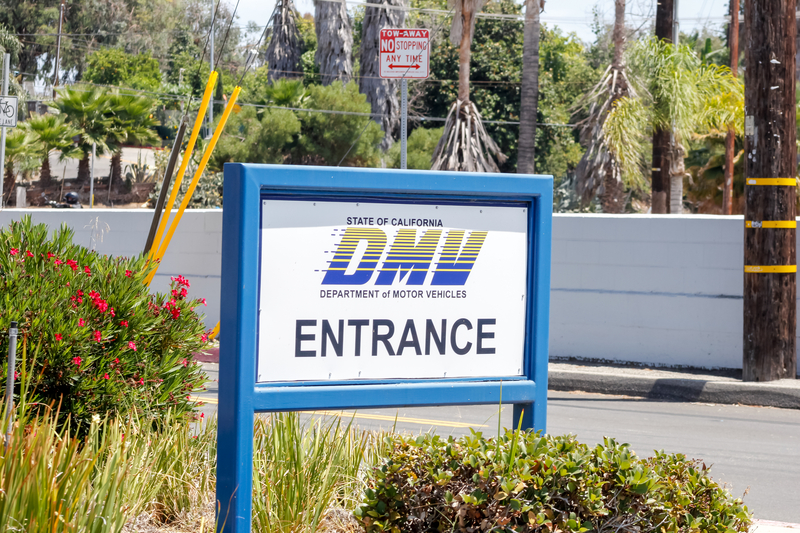
Electronic toll collection (ETC) has been around for nearly 40 years (Bergen, Norway, 1986) and - as percentages of revenue collected with ETC increased - the movement away from coin machines, manual collection and the stop-and-go of the gate arm gained momentum.
The promise of reduced manual collection costs, more throughput in collection and greater safety in travel increased acceptance of ETC and amplified the movement to all-electronic toll collection (AETC).
As ETC revenue collection approached 80% and then 90%, the consideration to exclusively accept electronic toll collection began to be adopted and the term AETC was born. As AETC implementation expanded, it became apparent that 90% of revenue does not equate to 90% of the customers and that the cost of collecting relatively small numbers of toll transactions, of small value, from large numbers of people, was a major effort.
This non-prepaid, non-electronic revenue still represented a considerable percentage of total revenue. To collect this “remnant” revenue required many customer interactions, while mailings and phone calls and back-office operations blossomed in size - supported by collection agencies engaged to address those resistant or unable to pay. It is estimated that over seven million persons in the US are unbanked, requiring alternatives to credit and bank debit payment methods.
Complicating factors in AETC
When customers travel on an AETC toll highway without a transponder or without registering their vehicle licence number with a prepayment account, the potential to collect the outstanding toll becomes dependent upon correctly identifying the vehicle licence plate number and the vehicle owner by accessing motor vehicle records.
Vehicles registered in the state in which the toll highway operates are much more likely to be ultimately collected since most states allow for vehicle registrations to be placed on hold until outstanding toll transactions are satisfied. For out-of-state vehicles, however, the likelihood of collection decreases.
“For out-of-state vehicles, the likelihood of collection decreases. Without interstate vehicle registration reciprocity, payment becomes voluntary”
Without interstate vehicle registration reciprocity, payment becomes voluntary. Because of the diversity in vehicle registration statutes and privacy laws of various states, there are numerous complications for establishing the needed reciprocity. Some states allow duplicate licence plate numbers between classes of vehicles and therefore the possibility exists that a collection action could be taken against an innocent traveller, resulting in negative press reports and damaged public relations. This is especially the case where the state in which the vehicle is registered has no toll facilities of its own. Understandably, these states are much less likely to support vehicle registration holds for toll violations in other states. However, it is also a consideration even where the state does have toll operations.
AETC in practice
Initially, AETC is undertaken with enthusiasm as reduced collection costs, safety and throughput are promoted. Initial press reports laud the progressive approach of the agency and plans are prepared for converting manual lanes, toll plaza buildings and other physical infrastructure. Lane equipment and other electronics are modified to support AETC and decommission manual and coin machine lanes.
Toll operations undergo significant modifications to implement AETC. Core capabilities required for implementing AETC are licence plate recognition and optical character recognition (OCR) commensurate with a greater emphasis on back office functions for processing and mailing notices, communicating with customers. Accounting modifications for reconciliation and reporting are made and modifications to computer systems are performed to support AETC and collection operations.
Cameras and OCR capabilities have significantly improved over the last 20 years and pay-by-plate programmes have been implemented, allowing customers to register their vehicle licence numbers as an alternative to acquiring and placing a transponder in the vehicle.
All of these approaches have resulted in significantly reduced revenue loss but short of toll barriers and gate arms, some revenue loss occurs. Strategies for minimising revenue loss and communicating the reasons for the loss are important considerations for AETC implementations.
AETC operational environments
Toll facilities are basically one of two types: urban barrier systems or long-haul ticket systems. In an urban barrier system, toll amounts are relatively small and occur more frequently as the traffic requires frequent exits and entrance ramps for accessing urban networks. In contrast, ticket systems are designed for long-haul toll operations, with large percentages of commercial vehicles having fewer exits and tolling points.
An important consideration for implementing AETC in an environment of significant commercial traffic is the toll amount, which is many times greater than that of a passenger vehicle. Some turnpikes in the US report that 50-60% of total revenue collected is from commercial vehicle traffic. AETC implementation in these environments requires careful consideration of the registration process for apportioned or commercial vehicles. Additionally, capture of front licence plates is especially important to obtain the commercial operator’s registration rather than the registration of the trailer.

Collection categories in AETC
There are numerous categories of toll collection to consider when implementing AETC. ETC transponder transactions and pay-by-plate programmes with prepayment credit, debit and cash have well-developed systems, processes and communication methods. The focus of AETC implementation is on those categories of collection likely to experience a significant increase in activity - i.e. the unauthorised traveller. These customers are predominately infrequent customers. Once cash payment methods are eliminated, the infrequent customer is faced with an immediate quandary of how to pay. Toll operators prepare major communication campaigns to inform the public and to encourage the adoption of electronic payment methods but infrequent customers are less likely to be informed or willing to participate in electronic payment. Even those who live near toll facilities are influenced by news reports concerning privacy, minimum balances, difficulties in resolving unintentional violations and any mistaken accusation of toll violation.
Typically, 75-80% of revenue is collected by transponder. Pay-by-plate programmes constitute an additional 5-12%. The end result is that nearly 10% of revenue must be collected through some other means. The systems, processes and communications that support this 10% require focused attention when implementing AETC.
Customers who have not established a payment method in advance of travel - but whose vehicle is registered in the state - constitute another category of collection. These transactions require solicitation through mailings. Typically, there are three separate mailings that are sent to the registered owner of the vehicle (obtained from the state division of motor vehicles).
“As AETC implementation expanded, it became apparent that 90% of revenue does not equate to 90% of the customers”
The first mailing requests payment with a small processing fee; the second with a processing fee and small penalty; and the last with a larger penalty. Failing this, transactions enter a collections process which can result in a vehicle registration hold until payment is made.
The last collection category to consider is for vehicles with no established a payment method and which are registered in another state or jurisdiction. The process of collection is usually the same as in state vehicles; however, without interstate reciprocity agreement there is no capability to hold vehicle registrations to enforce payment.
Unpredictable events can also happen that affect toll revenue loss and necessary changes to collection processes. Certainly, Covid was a significant event that affected personal contact in manual collections, but it also affected the ability to prepare mailings in a timely fashion and in some cases changes in toll collection policy and methods until employees could safely engage. Just as collections processes for parking, governmental fees and other vehicle related collections, the core element is correctly identifying the customer responsible for payment as a result of owning a vehicle and having an enforcement mechanism in place.
Conclusion
AETC is the future of tolling and implementing it has many important benefits, such as cost savings, customer convenience and safety. It is, however, not simply an expansion of existing ETC technology. AETC heightens the necessity for new approaches to ensure a complete and fair collection of tolls. In a facility under AETC, less of the transactions are guaranteed when manual or coin machine payment is eliminated.
ETC allowed the option of prepaying through a transponder or registering the licence plate and the ability to pay in the lane; AETC eliminated lane payment methods that were most often used by infrequent customers. Under AETC, the responsible vehicle registrant must be accurately identified and incentives put in place to encourage settlement of outstanding toll transactions and violations.
New approaches for leased vehicles, fleets and holders of title should be considered to encourage settlement. The strategies put in place for AETC post-transaction collections should also consider the type of facility (ticket or barrier) and the predominant transaction type (private or commercial). Careful consideration of these factors could have a major influence on the perceived and actual success of an AETC implementation.
______________________________________________________________________________________________________________________________________________________________________________________________________________________________________________________________________________________________________________________
Vehicle registration as a focus for reducing toll revenue loss
Access to registered owner (RO) information is critical and tollways need robust DMV solutions that allow communication with registrants of vehicles in both in-state and especially out-of-state toll travellers. This robust solution must incorporate all registrants, whether commercial or non-commercial. For example, 14 states segregate their commercial or apportioned vehicles into separate databases. The tollway should choose a DMV provider that has the knowledge and ability to reach both databases because of the large amount of revenue that commercial vehicles represent.
Many states, despite allowing direct access to their DMV system, do not have a mechanism to allow a search of commercial databases, leaving serious toll revenue unreachable. When selecting back-office vendors it is vital to consider the role of the DMV service provider. Because of the mission-critical role of the DMV service provider, agencies may wish to consider a separate procurement of the function.
When an RFP is issued for back-office services, the majority include DMV access within the responsibilities of the back-office provider. Although the back-office provider is selected through a thorough evaluation, unless a focus is placed on DMV services, revenue loss could be the result. Registration services are more complex and require experience and knowledge to avoid revenue loss.

Usually, registered owner data is accepted as accurate and that the registrant is the violator. However, it is unfortunately common for states to issue the same plate number across multiple major registration types, especially passenger and apportioned vehicles. If the DMV vendor does not have access to the apportioned database, notifications can be directed to the incorrect party. Such events waste financial resources in the acquisition of data and incorrect mailings, as well as the processing costs and customer contact to rectify the errors.
Acquiring the correct registrant is paramount – however, some DMVs require minimum dollar amounts to do a vehicle registration hold and it may be necessary to accumulate several transactions to reach the minimum requirement. Processing procedures must allow for this restriction. The issue is certainly a factor in out-of- state registration holds.
“Infrequent customers are less likely to be informed or willing to participate in electronic payment”
There are alternatives to this repetitive process. Most states require the toll agency to notify the registrant. However, after the notification process, it may be appropriate to notify other parties related to the ownership of the vehicle. There are fleet vehicles, leased vehicles and vehicles deeded to the entity that holds the loan on the vehicle. All of these entities have an interest in any liens that might be placed on vehicles before they are deeded to the registered owner.
Leasing and lienholder companies are on record at the DMV as the vehicle title owner. These companies are the true owner of the vehicle until the vehicle debt is paid, and that would include any public liabilities such as parking or tolling violations. Lenders do not want to transfer ownership of vehicles with public liabilities as the vehicle could be seized by the jurisdiction for such debt. Since the registrant has refused to pay the debt, the leasing and lending community can remit, and by contract with their consumer, levy that debt back to their customer.
Although the leasing and lender communities are the most interested party on record at DMV, DMVs in general do not have the ability to provide lease/lender contact information as they do for registration queries. This is another reason why the selection of a DMV provider is critical. A qualified provider will understand all aspects of the vehicle titling and registration process and will have developed solutions to ensure payment of outstanding toll violations.
ABOUT THE AUTHORS
Hal Worrall is founder of Transportation Innovations, and is a former president of IBTTA and former chair of ITS America

Mike Carneiro is director of DMV services at IPS Group












